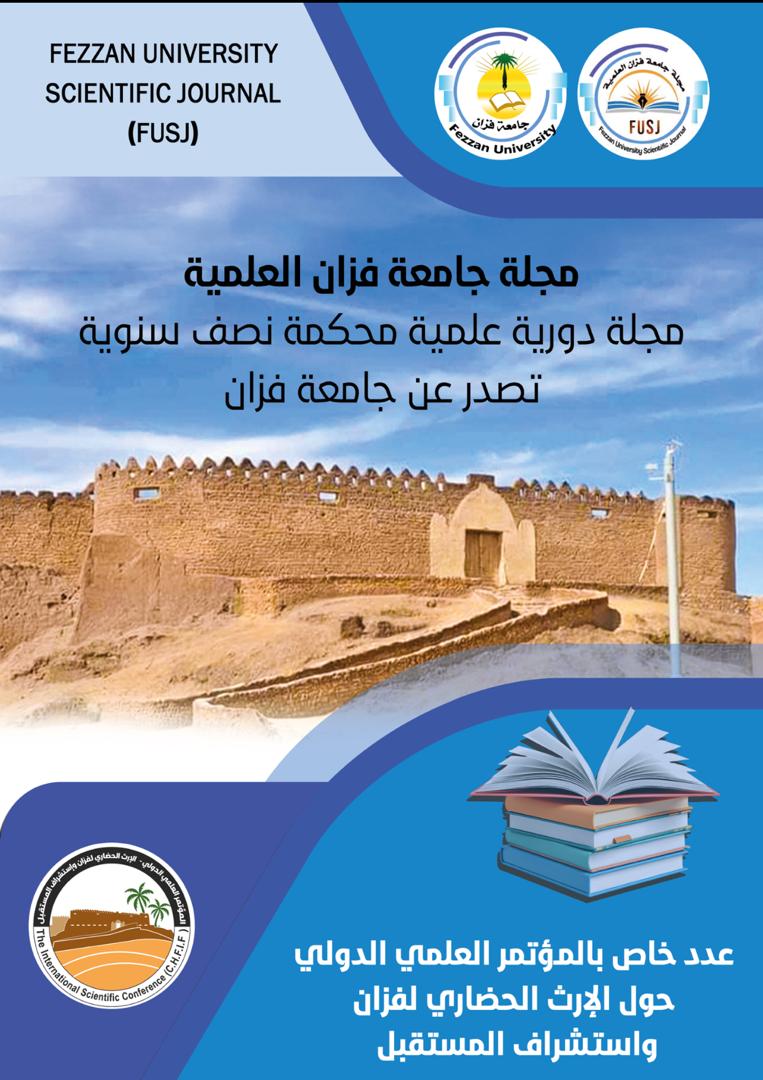القيمة التاريخية والجمالية للمعالم الطبيعية في إقليم فزان وسبل استثمارها سياحياً ( منطقة أكاكوس نموذجاً )
##plugins.themes.academic_pro.article.main##
الملخص
يحتضن إقليم فزان (Fezzan) تراثاً مادياً وثقافياً خالداً، وبه مقومات سياحية طبيعية وتاريخية وثقافية ودينية منتشرة في معظم المدن والقرى، والتي تشهد على منجزات الإنسان عبر مراحل التاريخ التي عاشها قديماً، حيث تعد منطقة الأكاكوس من أهم المعالم الطبيعية التي تمثل قيمة تاريخية وجمالية متنوعة منذ عصور ما قبل التاريخ، وهي تتدرج من كهوف الإنسان القديم ونقوشه، إلى مجموعة من الأقواس والأخاديد التي تحجرت على ضفاف الأنهار القديمة، حين كانت الصحراء منطقة خصبة، بما فيها من عبق التاريخ وروعة الآثار، كل هذا التنوع التاريخي والأثري والبيئي جعل من منطقة الأكاكوس منطقة جذب للسياح من مختلف بلدان العالم، لأن عظمتها وجمالها، والرسالة التي تحملها تثير فضول أي شخص، مما جعل هذه المنطقة تصنف من قبل منظمة اليونسكو تراثاً عالمياً عام 1985م .
أسباب اختيار البحث بسبب ما يحدث من تشويه الأثار أو تدميرها من بعض أفراد المجتمع، سواء كان ذلك متعمداً أو غير متعمد، وتأتي أهمية هذا البحث في التعرف على أهم الموارد الطبيعية بالمنطقة، وسبل استثمارها سياحياً، والوقوف على معوقات القطاع السياحي بها، بهدف زيادة حركة السياحة في ليبيا.
ويهدف هذا البحث إلى إبراز القيمة التاريخية والجمالية في منطقة الأكاكوس، ومدى أهميتها بإقليم فزان في تطوير وتنمية قطاع السياحة، وجذب السياح الذين يشكلون مورداً اقتصادياً وتنموياً هاماً للإقليم، والتعرف على أسباب ضعف الجذب السياحي بالأكاكوس، كما يركز البحث على استعراض أوجه القصور من جانب المهتمين، والمتعلقة بالإهمال، وتجاهل تطور القطاع السياحي، على الرغم من القيمة التاريخية والجمالية لمنطقة الأكاكوس.

